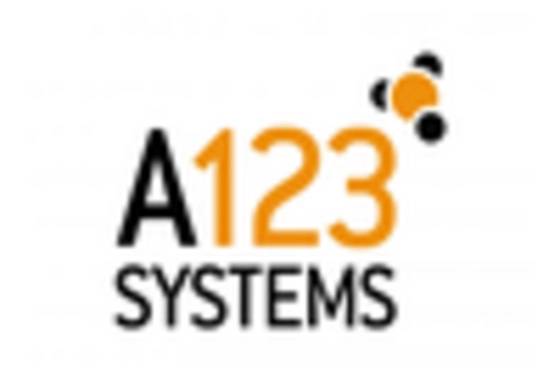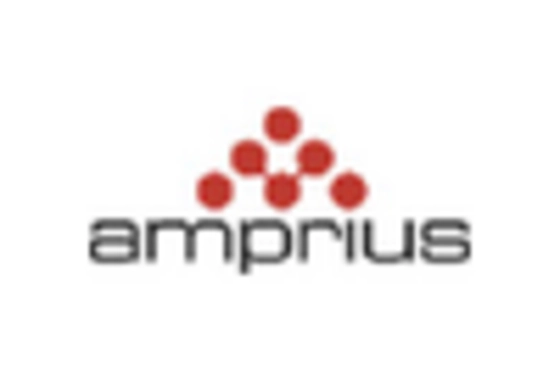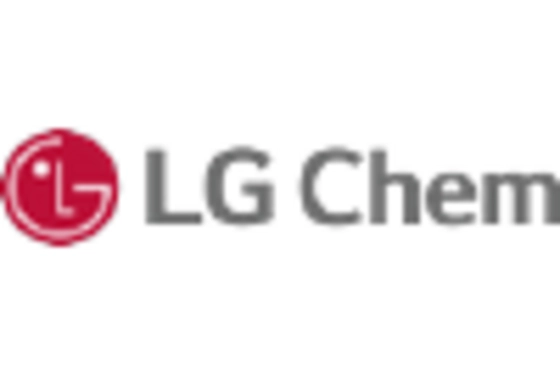Enhanced Energy Density
One of the most compelling attributes of lithium silicon batteries is their enhanced energy density compared to traditional lithium-ion batteries. The Lithium Silicon Battery Market is witnessing innovations that allow for a higher capacity of energy storage, which is crucial for applications ranging from consumer electronics to electric vehicles. Current advancements suggest that lithium silicon batteries can achieve energy densities exceeding 1000 Wh/L, which is a substantial improvement over conventional alternatives. This increase in energy density not only extends the range of electric vehicles but also enhances the performance of portable electronic devices. As manufacturers strive to deliver products with longer battery life and reduced weight, the demand for lithium silicon batteries is expected to escalate, thereby propelling the Lithium Silicon Battery Market forward.
Supportive Government Policies
Government policies aimed at promoting clean energy technologies are playing a crucial role in shaping the Lithium Silicon Battery Market. Various countries are implementing incentives and subsidies to encourage the adoption of advanced battery technologies, including lithium silicon batteries. For instance, tax credits for electric vehicle purchases and funding for research and development in battery technologies are becoming more prevalent. These initiatives not only stimulate market growth but also foster innovation within the industry. As governments recognize the importance of energy storage solutions in achieving climate goals, the Lithium Silicon Battery Market is likely to benefit from a favorable regulatory environment that supports investment and development.
Growing Renewable Energy Sector
The Lithium Silicon Battery Market is poised for growth due to the increasing integration of renewable energy sources such as solar and wind power. As the world transitions towards cleaner energy solutions, the need for efficient energy storage systems becomes paramount. Lithium silicon batteries offer a viable solution for storing energy generated from renewable sources, thereby facilitating a more stable energy supply. In 2025, the energy storage market is anticipated to reach a valuation of over 200 billion USD, with a significant portion attributed to lithium silicon technology. This trend indicates a growing recognition of the importance of energy storage in achieving energy independence and sustainability goals. Consequently, the Lithium Silicon Battery Market is likely to see heightened interest and investment as stakeholders seek to capitalize on this burgeoning sector.
Rising Demand for Electric Vehicles
The Lithium Silicon Battery Market is experiencing a surge in demand driven by the increasing adoption of electric vehicles (EVs). As consumers and manufacturers alike prioritize sustainability, the shift towards EVs is becoming more pronounced. In 2025, the market for electric vehicles is projected to reach approximately 30 million units, which is indicative of a robust growth trajectory. This transition necessitates advanced battery technologies, and lithium silicon batteries, with their superior energy density and longevity, are well-positioned to meet these requirements. The growing infrastructure for EV charging stations further supports this trend, as it alleviates range anxiety among potential EV buyers. Consequently, the Lithium Silicon Battery Market is likely to benefit significantly from this expanding EV landscape.
Technological Innovations in Battery Manufacturing
Technological advancements in battery manufacturing processes are significantly influencing the Lithium Silicon Battery Market. Innovations such as improved silicon anode production techniques and enhanced electrolyte formulations are contributing to the performance and cost-effectiveness of lithium silicon batteries. These advancements are expected to reduce production costs by approximately 20% by 2026, making lithium silicon batteries more accessible to manufacturers and consumers alike. Furthermore, the development of scalable manufacturing processes is likely to facilitate mass production, thereby meeting the increasing demand across various sectors. As these technologies mature, the Lithium Silicon Battery Market is anticipated to experience a transformation, characterized by increased efficiency and reduced environmental impact.
















Leave a Comment